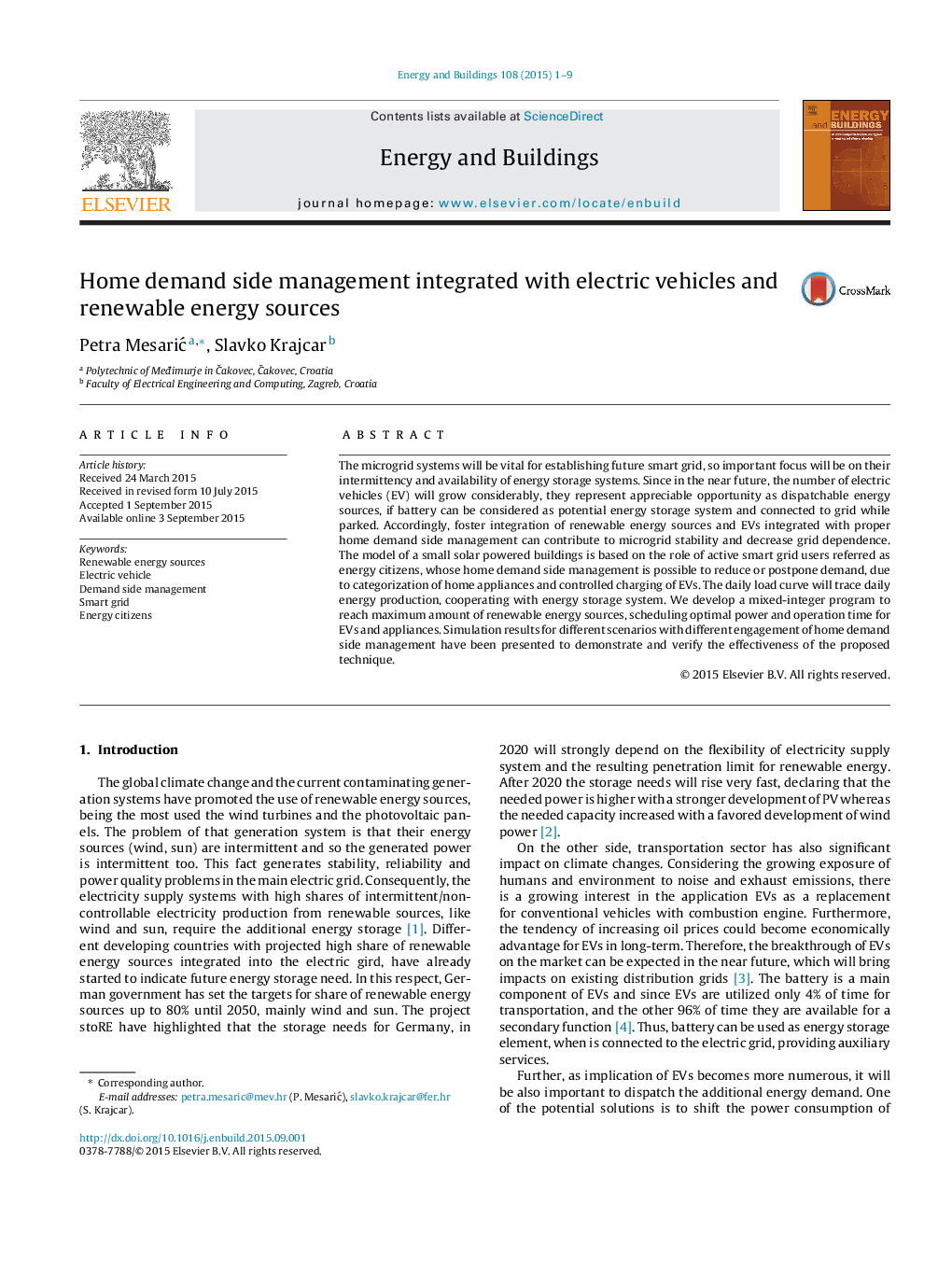| Article ID | Journal | Published Year | Pages | File Type |
|---|---|---|---|---|
| 6730858 | Energy and Buildings | 2015 | 9 Pages |
Abstract
The microgrid systems will be vital for establishing future smart grid, so important focus will be on their intermittency and availability of energy storage systems. Since in the near future, the number of electric vehicles (EV) will grow considerably, they represent appreciable opportunity as dispatchable energy sources, if battery can be considered as potential energy storage system and connected to grid while parked. Accordingly, foster integration of renewable energy sources and EVs integrated with proper home demand side management can contribute to microgrid stability and decrease grid dependence. The model of a small solar powered buildings is based on the role of active smart grid users referred as energy citizens, whose home demand side management is possible to reduce or postpone demand, due to categorization of home appliances and controlled charging of EVs. The daily load curve will trace daily energy production, cooperating with energy storage system. We develop a mixed-integer program to reach maximum amount of renewable energy sources, scheduling optimal power and operation time for EVs and appliances. Simulation results for different scenarios with different engagement of home demand side management have been presented to demonstrate and verify the effectiveness of the proposed technique.
Related Topics
Physical Sciences and Engineering
Energy
Renewable Energy, Sustainability and the Environment
Authors
Petra MesariÄ, Slavko Krajcar,
